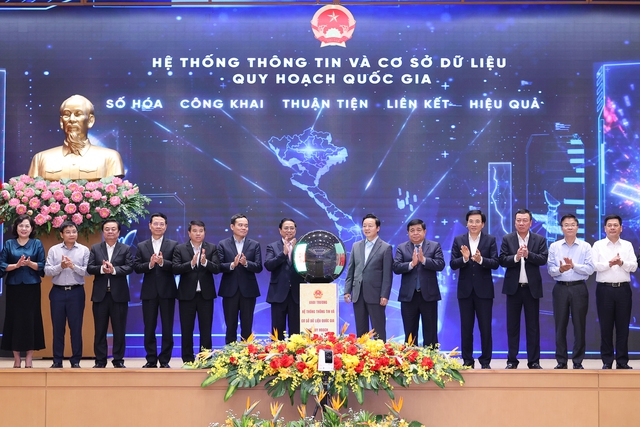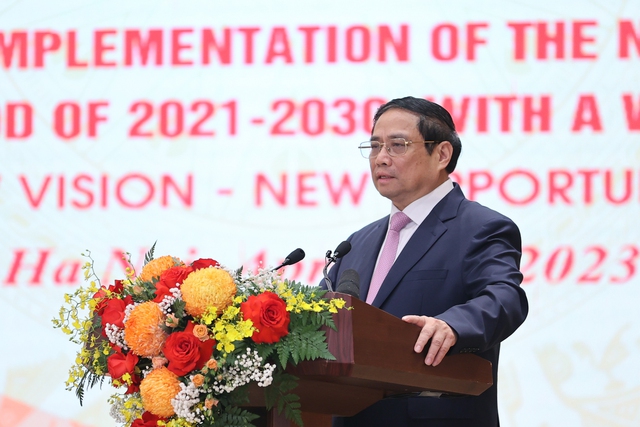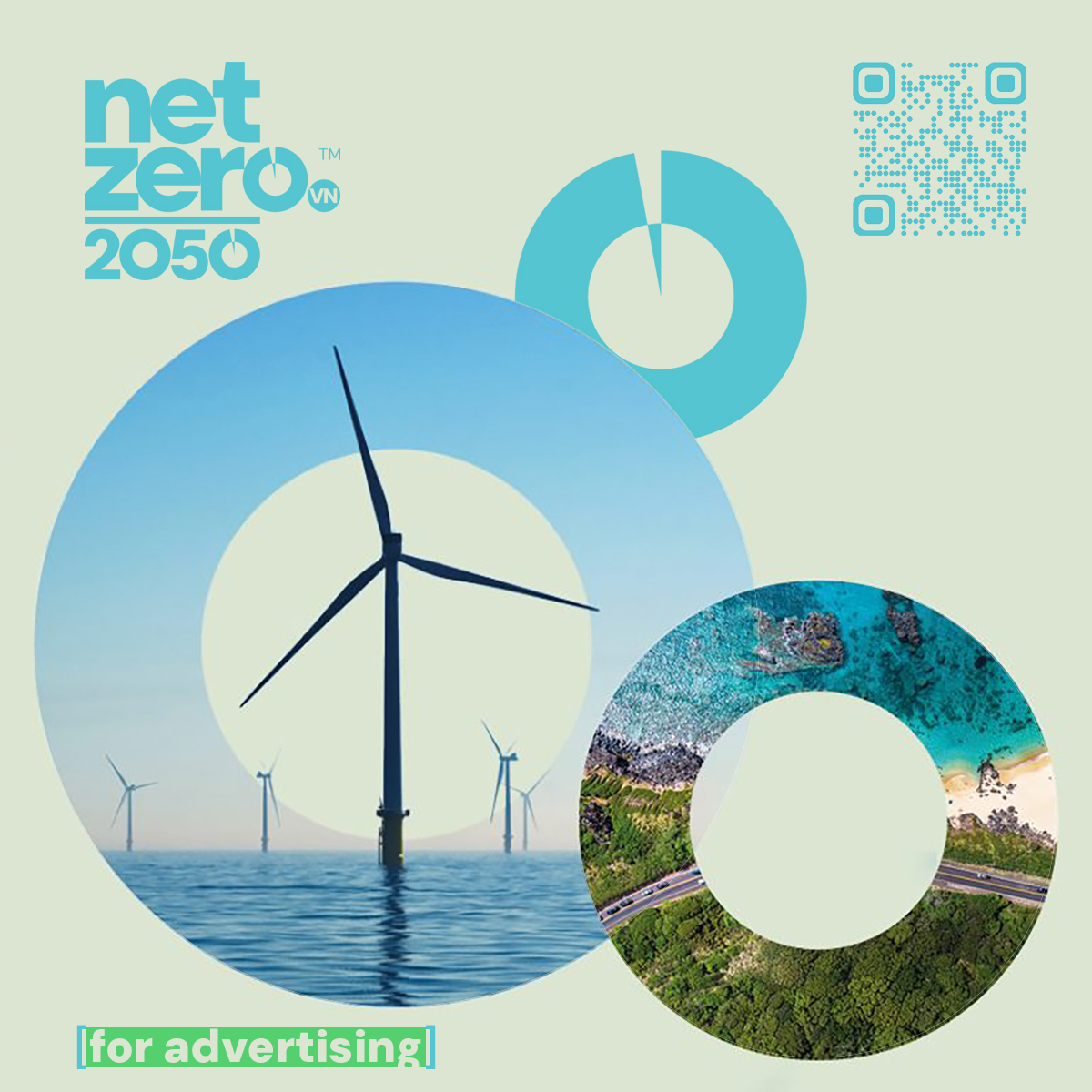
The Vietnamese government today [April 20] launched the National Master Plan for 2021-2030 with a vision to 2050, the first of its kind.
Under the plan, Vietnam envisions becoming an upper middle-income country with a modern industrial base, and robust economic growth fueled by science, technology, innovation, and digital transformation by 2030.
The plan emphasizes the need for an efficient, integrated, and sustainable spatial organization model for national development, including the establishment of dynamic zones, economic corridors, and growth poles, supported by modern and interconnected infrastructure. It also emphasizes the importance of promoting economic balance and enhancing the resilience of the economy.
Transforming into a developed country by 2050
The economic objectives outlined in the plan include aiming for an average annual GDP growth rate of around 7% from 2021 to 2030.
By 2030, the target is for Vietnam to achieve a GDP per capita of approximately US$7,500 at current prices. Vietnam is set to become a developed country with a high-income economy by 2050, characterized by a just, democratic, and civilized society, and supported by modern and comprehensive infrastructure.
The plan also emphasizes the development of smart urban systems that are modern, environmentally friendly, and culturally rich. It aims to achieve harmonious and sustainable regional development while preserving and promoting the nation’s cultural values and identity.
In addition, the national master plan places a strong emphasis on environmental sustainability, striving for a good-quality environment, and fostering a society that harmoniously coexists with nature. The goal is to achieve efficient development with low carbon emissions, with a national target of reaching “net zero” emissions as soon as possible by 2050. The projected average growth rate for the period of 2031-2050 is estimated to be around 6.5-7.5% per year.
Six economic regions
The National Master Plan envisions a green, sustainable, and comprehensive development of Vietnam’s northern central and mountainous regions. This includes efforts to protect and restore forests, develop processing, manufacturing, and energy industries, and promote high-tech, organic, and specialty agriculture in the region. The industrial belt comprising Bac Giang, Thai Nguyen and Phu Tho is expected to serve as a driving force for regional growth.
In the Red River Delta region, the focus is on developing modern industrial and service industries, establishing innovation centers, and leading in science and technology development. The plan also aims to develop the Haiphong-Quang Ninh area into a modern, internationally recognized maritime economic center in Southeast Asia.
In the North Central and Central Coast regions, emphasis will be placed on developing the marine economy while ensuring national defense and security. This includes improving the efficiency of the seaport system, coastal economic zones and industrial parks in the area.
The master plan includes efforts to develop marine and island tourism, eco-tourism, and cultural-historical tourism in Vietnam. It aims to develop the coastal areas of Thanh Hoa, Nghe An and Ha Tinh into an industrial development center for the region and the country.
In the Central Highlands region, the plan emphasizes the protection of forests while ensuring the security of water sources. It also aims to improve the efficiency of industrial plant development and promote the development of agro-forestry product processing industries and renewable energy. The plan also addresses the sustainable development of bauxite mining, alumina processing and aluminum production.
The Southeast Region is envisioned to become a dynamic development center with a high economic growth rate, serving as the largest growth engine in the country. It aims to be a center of science, technology, innovation, high-tech industry, logistics, and an international financial center with high competitiveness in the region.
The Mekong Delta region will become a sustainable, dynamic and highly efficient agricultural economic center, not only for Vietnam but also for the region and the world.
The Master Plan also provides clear guidelines for the development orientation of the maritime space, the spatial allocation of key industries, and the development of infrastructure at the national level.

Ensuring sufficient resources to realize the master plan
Prime Minister Pham Minh Chinh highlighted key tasks to be undertaken in the near future to implement the National Master Plan.
“With an innovative mindset and a forward-looking vision, the Master Plan aims to identify untapped areas for growth, unlock new development opportunities and create new value,” Prime Minister Pham Minh Chinh said at the conference to launch the Master Plan.
During the conference, Prime Minister Chinh stressed the need to develop specific projects and programs and allocate resources for their implementation after the Master Plan is approved. He emphasized that these efforts should result in measurable efficiency and contribute to building a foundation for economic independence, self-reliance and active international integration to achieve the goal of a strong and prosperous country where people are increasingly prosperous and happy.
The Prime Minister also stressed the importance of cooperation among all levels and branches to ensure the synchronized and effective implementation of the tasks and solutions outlined in the National Master Plan.
It is crucial to thoroughly understand the contents of the National Master Plan and implement it in every agency and unit. This includes reviewing, updating and translating the National Master Plan into national, regional and provincial planning.
In addition, priority should be given to allocating resources for the effective implementation of the National Master Plan, with special emphasis on securing capital for major national programs and projects, Mr. Chinh said, expecting greater speed in the implementation of projects with approved investment policies and decisions by relevant authorities.
Efforts should be made to perfect institutions and policies, attract development investments, improve productivity, and apply scientific and technological advances through innovation, he continued.
The Prime Minister stressed the importance of maintaining a reasonable ratio between recurrent expenditure and development investment expenditure. In this regard, there should be a gradual increase in development investment spending while prudently reducing recurrent spending, Chinh said.
In addition, public investment spending should be restructured to prioritize focus and effectiveness. This includes improving the efficiency and effectiveness of public investment allocation and disbursement.
Chinh stressed the need to accelerate the sale of state capital and the privatization of state-owned enterprises (SOEs) that are not on the list of enterprises that must be owned by the state.
“This will create opportunities to mobilize non-state resources for investment and socio-economic development,” Chinh said.
Nguyen Tung




